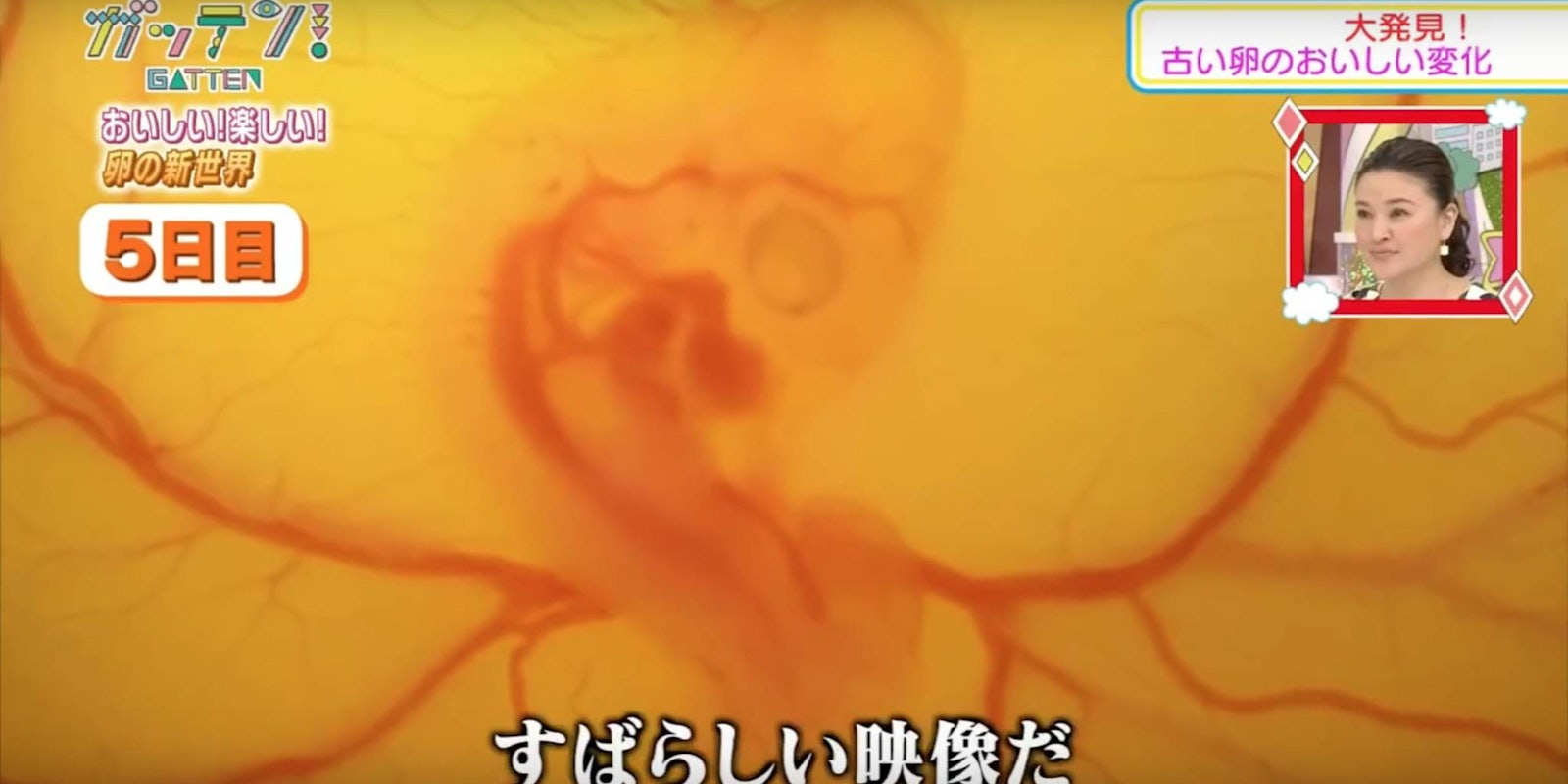Over the past few days, you may have seen a video of Japanese high school students demonstrating a way to hatch a chicken outside of its egg—to the amazement of some onlookers. The video’s narration, according to the blog Spoon and Tamago, explains that these students invented the technique.
But this technique isn’t new. Scientists have been hatching chickens out of their shells for decades.
The first description the Daily Dot could find of a shell-less (or ex-ovo) culture technique dates back to an article published in the Journal of Poultry Science in 1971. We also found another paper telling students how to design this experiment that referenced attempts at shell-less culturing in the 1960s. (That paper also mentioned that the technique was finally refined in 1974 by a high school student.)
Since the initial Journal of Poultry Science article, researchers have developed and refined several different techniques.
Some involve incubating the eggs in the shell for three days before transferring them to a petri dish. There are many applications for a method of hatching eggs out of the shell, including the fact that you learn a lot watching an embryo develop in real time with your naked eyes.
According to Snopes, the technique the Japanese students used seems to be the same technique described in a 2014 paper also published in the Journal of Poultry Science. But in that paper, the authors reference a 1988 paper that served as the inspiration for the technique.
It’s a bit more complicated than dumping shell contents into plastic wrap and putting them in the incubator. The approach requires buying fertilized eggs from the store, incubating them in the shell for a few days, and then carefully and quickly transferring them to the cup, all using flawless sterile techniques.
You also have to carefully monitor the amount of oxygen, humidity, and calcium in the whole system to make sure the chicks are healthy and happy when they catch. Natural egg shells are permeable to oxygen and carbon dioxide, which is what lets the chick embryo breathe during incubation. So the plastic wrap must also be made permeable to these gases—usually by making a small hole at the top of the bag.
With a well-funded school system, these techniques should be easy enough for any high school student to replicate with the help of a teacher.


